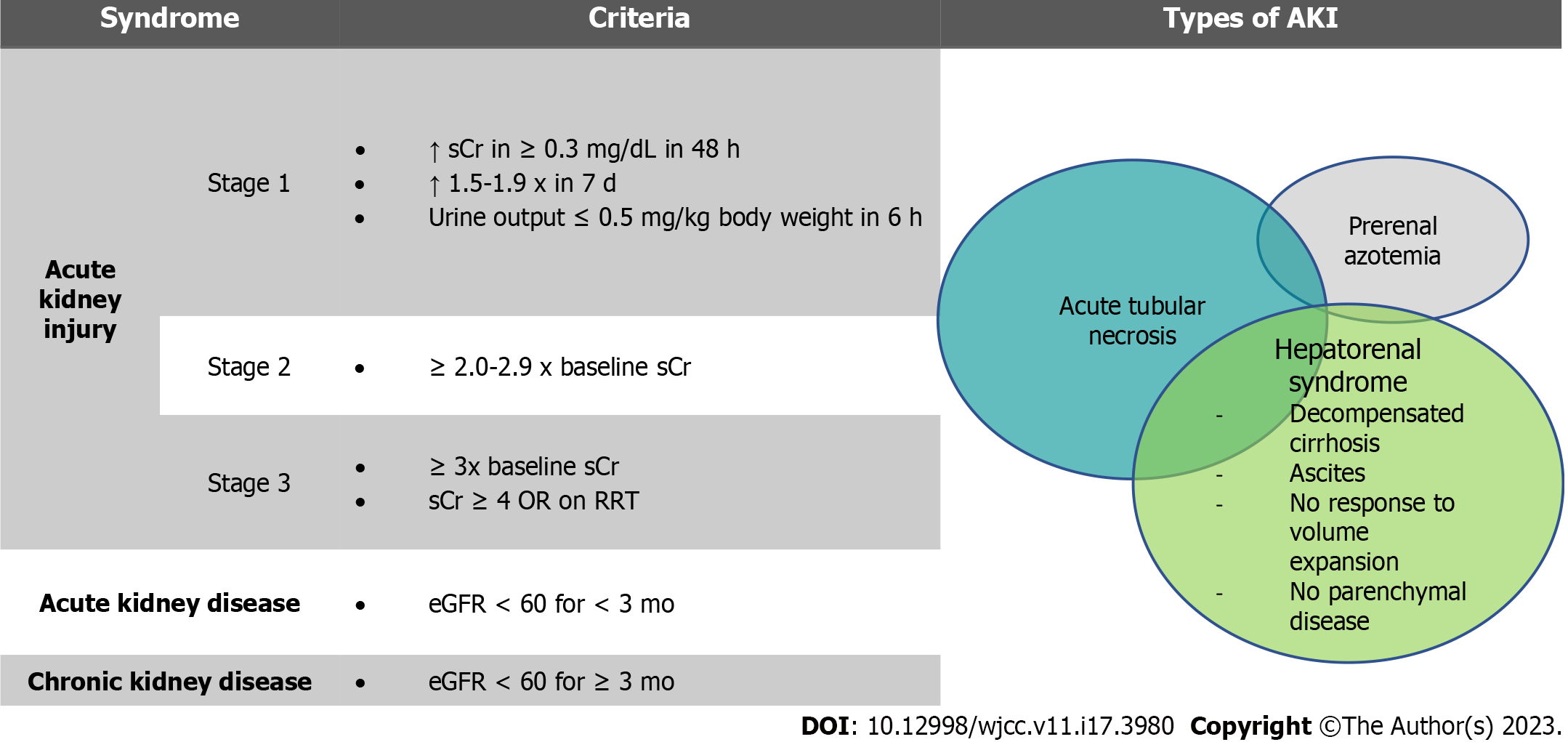Copyright
©The Author(s) 2023.
World J Clin Cases. Jun 16, 2023; 11(17): 3980-3992
Published online Jun 16, 2023. doi: 10.12998/wjcc.v11.i17.3980
Published online Jun 16, 2023. doi: 10.12998/wjcc.v11.i17.3980
Figure 1 Definitions and diagnostic schema for kidney disease in patients with chronic liver disease based on updated 2015 guidelines.
sCr: Serum creatinine; RRT: Renal replacement therapy; AKI: Acute kidney injury; AKD: Acute kidney disease; CKD: Chronic kidney disease; OR: Odds ratio; eGFR: Estimated glomerular filtration rate.
Figure 2 Hepatorenal physiology: A simplified perspective.
Hepatorenal physiology includes a cascade of multi-systemic effects that initiate with portal hypertension. Portal hypertension is associated with increased inflammation, reduced effective circulating volume, systemic vascular resistance, altered cardiac hemodynamics, and gut bacterial translocation. Subsequent increased circulation of vasodilators including nitric oxide and prostaglandins, and activation of the renin-angiotensin-aldosterone system result in dysregulated renal vasoconstriction and decreased renal perfusion. Note: The cascade of pathophysiology in hepatorenal syndrome is complex and understanding is developing; this is a simplified figure created for the purpose of this publication. Created in BioRender.com.
Figure 3 Summary of sex-based differences in cirrhosis related kidney disease.
AKI: Acute kidney injury; HRS: Hepatorenal syndrome; ET-A: Endothelin-A. Created in BioRender.com.
- Citation: Cooper KM, Colletta A, Moulton K, Ralto KM, Devuni D. Kidney disease in patients with chronic liver disease: Does sex matter? World J Clin Cases 2023; 11(17): 3980-3992
- URL: https://www.wjgnet.com/2307-8960/full/v11/i17/3980.htm
- DOI: https://dx.doi.org/10.12998/wjcc.v11.i17.3980











